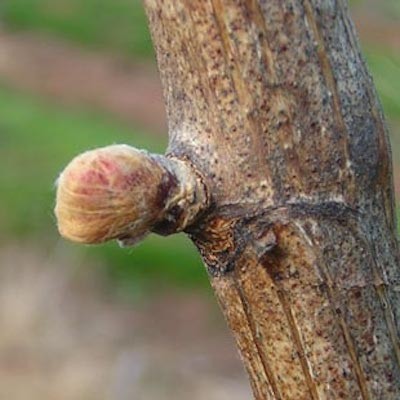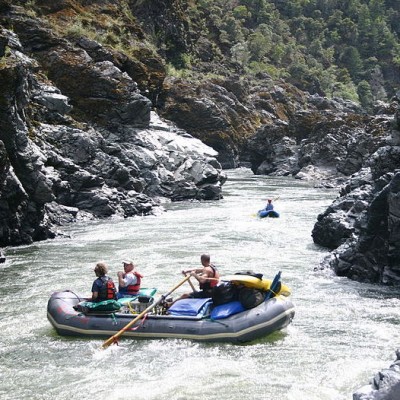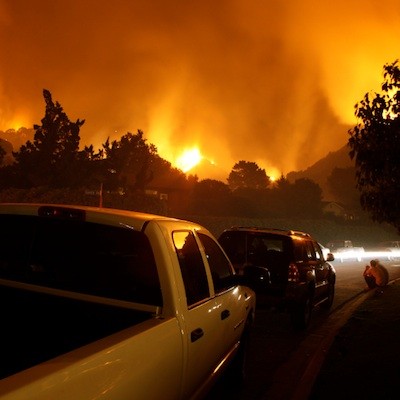SLIDES: Oregon Industries Jeopardized by Mild Winter





 Email to a friend
Permalink
Email to a friend
Permalink
Thursday, March 19, 2015
GoLocalPDX News Team
The balmy weather Oregon is experiencing, although pleasant, does not bode well for some of the state’s biggest industries.
The early, hot spring poses risks to Oregon’s wine industry, crops, forest services, apiculture (bees), outdoor recreation such as rafting, and has taken a serious toll on the state’s winter recreation industry.
Slow business at the state’s ski resorts are just the beginning of the impacts of a dire snow year.
Governor Kate Brown declared a drought emergency Tuesday in Lake and Malheur counties, both of which call agriculture a chief industry. A snowpack between six and 40 percent of normal was the leading factor in the decision, according to Keith Mills of the Oregon Water Resource
Related Slideshow: Oregon Industries Jeopardized by Warm Weather
The balmy weather Oregon is experiencing, although pleasant, does not bode well for some of the state’s biggest industries.
The early, hot spring has posed risks to Oregon’s wine industry, crops, forest services, apiculture (bees), outdoor recreation such as rafting, and has taken a serious toll on the state’s winter recreation industry.

Prev
Next
Wine
When Spring arrives early, all biological processes get going earlier, including one of the most finicky Oregon crops -- grapes, which sustain Oregon’s $207.5 million wine industry through 950 vineyards and over 600 wineries.
Due to the warm weather, vineyards across the state are experiencing “bud break” -- the buds coming out of the vine -- about three weeks earlier than normal, two weeks earlier than in 2014, said Oregon State University Vitriculture expert Patty Skinkis.
“The main concern has to do with the potential for frost damaging growing tissues,” Skinkis said. “Once they start growing that green tissue, it’s susceptible to frost.” Frost damages the most fruitful shoots, making for a significant reduction in yield.

Prev
Next
Winter Sports
“This has been a very, very stingy snow season for us,” said Mt. Hood Meadows spokesman Dave Tragethon. The total number of visits for the resort was down by roughly one third, unable to open until December 22, almost a month late.
Hoodoo Ski Area, near Sisters, was open just ten days. Warner Canyon did not open at all. Cooper Spur and Willamette Pass did not open until January, while Ski Bowl, Ferguson Ridge, Mount Ashland, and Spout Springs could not consistently remain open.
Only a handful of Oregon resorts stayed open for most of the year, including Timberline, Mount Bachelor,Mt. Hood Meadows, and Anthony Lakes Mountain Resort.

Prev
Next
River Recreation
Lower snowpack means less water in the rivers. Some outdoor recreational industries, such as river rafting, will take a hit this summer.
Craig Wright, owner of Oregon River Company since 1978, said he expects low water levels to negatively impact the bottom line of the company, which employs 25 full and part time staff.
“It’s tense,” he said. “It’s not unprecedented but it’s pretty darn unusual.”

Prev
Next
Apiculture (bees)
Bees are coming out early, signalled by the early bloom of flowers.
“It’s a worry that if the weather doesn’t stay like this, if it gets rainy or cold, the bees can’t sustain themselves,” said entomologist Ramesh Sagili.
Bees can’t go outside the hive and forage if the temperature drops below 40 or 45 degrees farenheit. Ideal foraging temperature is 55 degrees.
“If bees die, then pollination becomes a problem,” Sagili said. “Agricultural crops are very dependent on honey bees.”

Prev
Next
Agriculture
Governor Kate Brown declared a drought emergency Tuesday in Lake and Malheur counties, both of which rely on agriculture as a key industry. A snowpack between six and 40 percent of normal was the leading factor in the decision, according to Keith Mills of the Oregon Water Resource.
Overall crop yields will be lower, as farmers focus more on money-making crops, switching to crops like wheat which get higher yield for less water.

Prev
Next
Forest Fire Fighting
In 2013, firefighting costs ran an all-time record of $122 million, as crews battled more than 100,000 acres. The state tapped a $25 million insurance policy, and turned to the state’s general fund to pick up the over run.
In 2014, the ODF spent $75.6 million fighting over a thousand fires that burned more than 50,000 acres of forest. Again the state tapped its full insurance policy of $25 million and the over run came out of the state’s general fund.
According to ODF spokesman Rod Nichols, there is no indication this year will be any different.
Enjoy this post? Share it with others.





 Email to a friend
Permalink
Email to a friend
Permalink

















Follow us on Pinterest Google + Facebook Twitter See It Read It